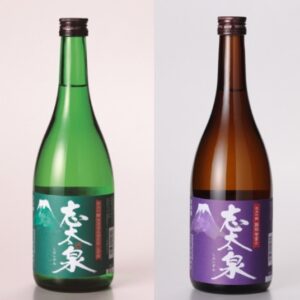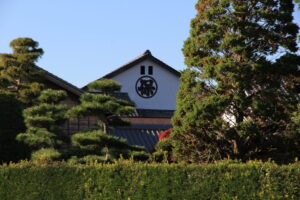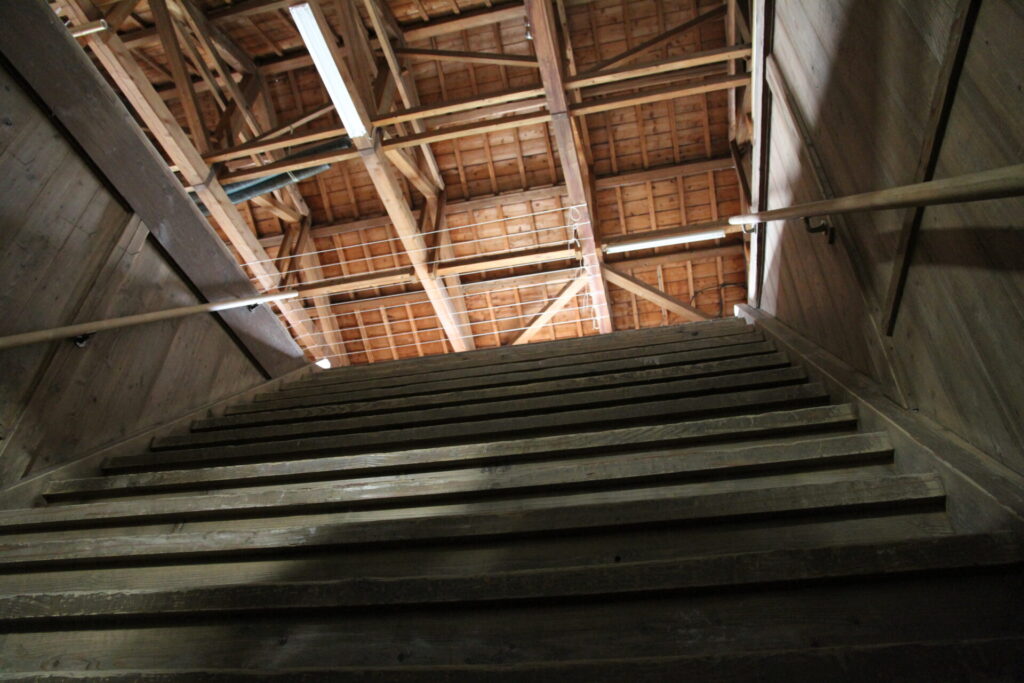
SHIDAIZUMI is brewed in Fujieda city, Shizuoka.
Contents
The attraction of SHIDAIZUMI
The brewery's name is Shidaizumi Shuzo, and its representative brand, “SHIDAIZUMI”, is named after the company name, both being used since its founding.
“Shida(志太)" originated in the Shida Plain in Shizuoka Prefecture (Suruga Province) whose name is said to have come from the plant fern, “Shida”. We can find references to of Shida-gun, or Shida county, recorded as early as the Nara and Heian periods (710-1192). The county was the political, economic, and cultural center of the Shida Plain. The area includes present-day Fujieda City, Yaizu City, and Shimada City.
When you break down the name, SHIDAIZUMI(志太泉)into Kanji characters. The first “志” expresses “will”, the next “太” means “thick and bold”, and the last ”泉” is “fountain” or “spring”. The brewery hoped to have their sake embody the image of “a spring with a strong will”.
Shidaizumi Brewery is strongly attached to its land, whose climate is mild and is blessed with good water quality. They say, "We want to make sake that makes people think, 'I want to go to Fujieda to drink SHIDAIZUMI.'”
Water is an asset

“You can buy rice, but not brewing water.” This was the thought of the first generation of the brewery, Kyusaku Mochizuki, and Shida’s excellent water quality was the reason it was chosen as its site.
The water quality of the upper reaches of the Seto River*1 is so good that even today it does not need to be filtered. As if to prove the point, Shidaizumi’s brewing water has long been used at the annual tea ceremony *2 held in Shizuoka.
The hardness of water is medium soft with a numerical value of 3.4.*3 This is the base of the soft sake quality of SHIDAIZUMI.
Note 1:The Seto River originates near Mt. Takane in Fujieda City, Shizuoka Prefecture, flowing south. It empties into Suruga Bay near Yaizu Port in Yaizu City.
Note 2:The "Hand-rolled Tea Ceremony" is held in Fujieda City every year. The purpose of this event is to train people to be skilled in the art of hand-rubbing tea and to hand down this traditional technique to future generations.
Note 3:Hardness is a numerical value that expresses the amount of calcium and magnesium dissolved in 1000ml of water. Here, the German scale is used.
The following values are indexed to the brewing water: "soft water up to 3," "medium soft water 3-6," "light hard water 6-8," "medium hard water 8-14," and "hard water 14-" .
There are some reference data: 4.0 for Fushimi, which is known for its soft water; 5.5 for Tokyo tap water; 6.5 for Nada; 16.8 for Evian; and 81.4 for Contrex.
About Typeface of SHIDAIZUMI
These are two typical label typefaces used by Shidaizumi Brewery.


The calligraphy on the left is the standard, centered on daiginjo and ginjo sake.
The previous owner had a relationship with Ogawa Kunio*4, a writer from Fujieda City, and had his calligraphy done for the sake. Ogawa's seal can be seen in the middle of the calligraphy. Mount Fuji’s depiction on the label also expresses the brewery’s hometown pride that both the sake and Mount Fuji are of Shizuoka.
The calligraphy on the right side is used for junmai sake.
Another typeface with a strong brush stroke is for other kinds of “ordinary sake”*5, which has been used since the company's founding and was a favorite of the previous generation.

Note 4: Kunio Ogawa (1927-2008). Novelist born in Fujieda City, Shizuoka Prefecture. His representative works include "Apollo's Island," "Itsumin," and many others.
Note 5: Ordinary Sake
“Specially designated sake” is sake that meets the criteria of "Junmai-shu" (sake made only with rice, koji and water) and a certain amount of how much rice is polished in making the sake. Others are called “ordinary sake” (futsu-shu).
About Shidaizumi Brewery

Shidaizumi Brewery was founded in 1882 by Kyusaku Mochizuki. Their sake brewing was inspired by the Mochizuki family's desire to make effective use of the surplus annual rice harvested from their rice fields.
Before the war, the company owned not only the brewery but also a winery, engaging in a wide range of businesses. World War II forced their closure, but after the war ended, the brewing business resumed in 1954. Soon after, the company began making ginjo-style sake and won numerous awards at sake competitions.
The "Nyan*6 Cup" sake (launched in 2005), a product with a cute container designed to get people to pick it up and become interested in sake, also became a topic of conversation.
The idea was that it would be a convenient size, and that people would reuse the cute cup because it would be a shame to throw it away. It’s impressive that the company engaged with sustainability concerns since that time.


Note 6: “Nyan” is a word for a cat’s meow



Here is a message from Mr. Mochizuki.
“I want people to encounter sake that is supported by the local people in the region. And I believe SHIDAIZUMI is such a sake. But, we want to pursue more for the sake which shows its excellence not just drinking itself, but the food and the sake enhancing each other.”
Interview Date: March 3, 2022 by ZOOM
Interviewee: Mr. Yujiro Mochizuki, CEO and the 4th generation of Shidaizumi Brewery
Image Data Presented by: Shidaizumi Brewery
Interview Note:
I first encountered Shidaizumi at a Japanese Ryokan (inn) near Lake Hamanako in Shizuoka Prefecture. I did not know this brand before, but when I tried it, I was pleasantly surprised. I remember that the meal that night tasted even better.
Travelling, eating the local food, and drinking the local sake, which I believe nothing more luxurious than that.
Listening to Mr. Mochizuki's talk, I felt as if I understood a little more about the meaning of sake that is supported by the local people.


